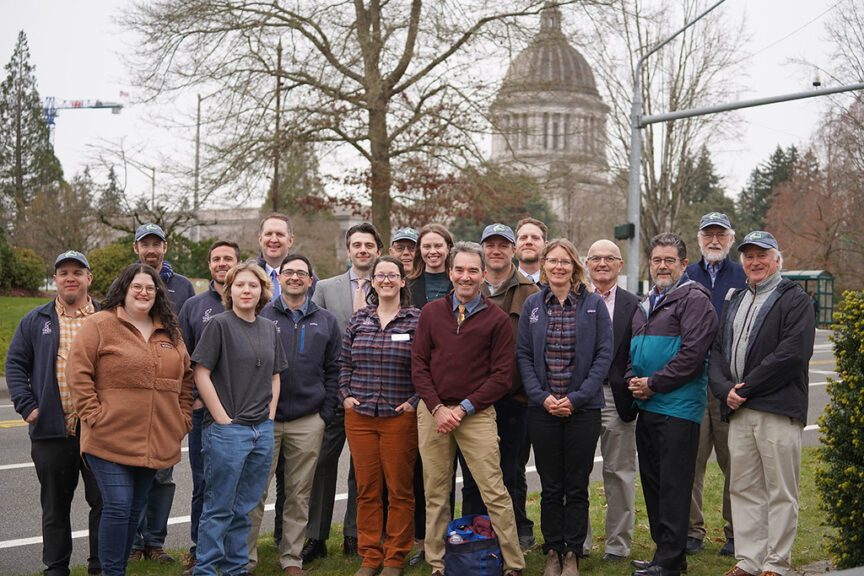
Wins and losses for fish and anglers in a tough budget
April 28 was Sine Die, the ceremonial end of the 2025 Washington State Legislative session and passage of the State’s 2025-27 budgets.
While passing a new state budget is never easy, this session was especially complicated as the State grappled with a significant operating and transportation budget crisis, a new Governor for the first time in twelve years, and tensions between the state and federal government around both funding and policy issues.
Trout Unlimited has been hard at work this session testifying on a variety of policy bills, tracking state budget developments, defending the Skagit winter steelhead season, and hosting our annual state advocacy day with the Washington Council of Trout Unlimited.
As the dust settled on the session, there was good news and bad news for fish and anglers.
Budget shortfall impacts fisheries and conservation programs
As we wrote about in our previous legislative update, Washington State faced a significant state budget crisis this session.
As expected, this resulted in significant budget cuts across all state agencies and some important Washington Department of Fish and Wildlife (WDFW) programs impacting steelhead and salmon fisheries and conservation were cut.
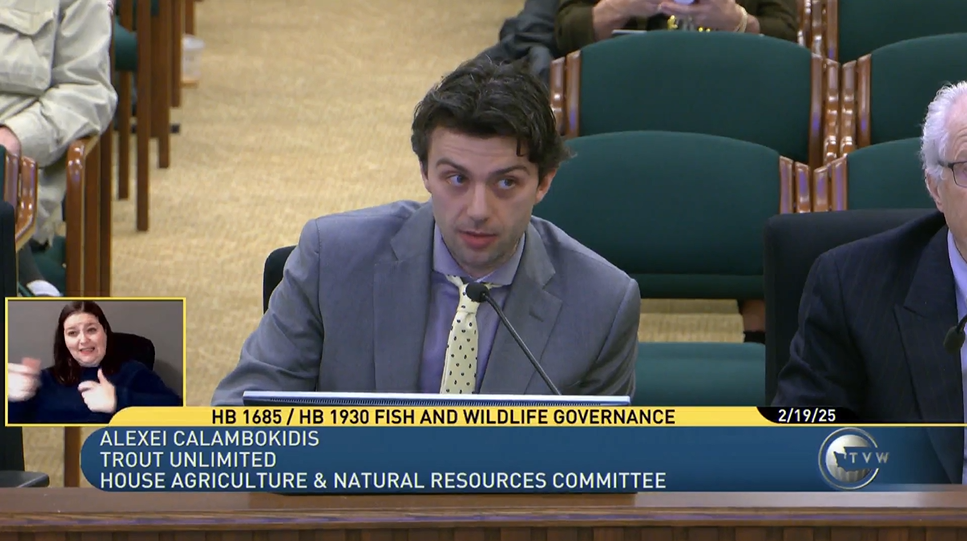
State agencies that rely more heavily on state General Fund allocation (think state sales tax revenue) than independent revenue streams faced larger cuts.
So, in the end, what happened to the funding items and programs we mentioned in our previous blog?
- $1.6m for Puget Sound Salmon and Steelhead Monitoring (Quicksilver Portfolio) Cut
- $1.4m for Columbia River ESA Permitting: Cut
- $4.4m Hatchery Production Evaluation: Cut
- $1m for Enforcement Funding: Cut
- $4m for Biodiversity Funding: Cut
- $900k for ALEA Volunteer Funding: Cut
- $1.4m Lake Washington Predator Suppression: Cut
Despite public outcry, the funding for the Skagit winter steelhead season (a part of the Quicksilver Portfolio) was not included in the budget. This isn’t the end of our advocacy on behalf of this iconic fishery, and we want to thank everyone who took time to contact their legislators or shared our calls for action.
Why cut funding for these items in particular?
Agency budgets saw a total of $2.7B in cuts across the entire operating budget this session, which will result in loss of staff and programs. Several of the items on the list above – like Quicksilver, Enforcement funding, Lake Washington predator suppression, and ESA permitting for the Columbia River tributaries – have an additionally complicated status in the budget that put them first in line to be cut.
Broadly speaking, budget items are either listed as ongoing funding (for items that need continuous funding in future budgets) or one-time funding (for items that only need funding for the upcoming two-year budget cycle).
The state constitution requires Washington to pass a balanced budget based on a four-year outlook. Originally, the legislature had opted to fund these programs as one-time items, with the plan that they would be continued in future sessions.
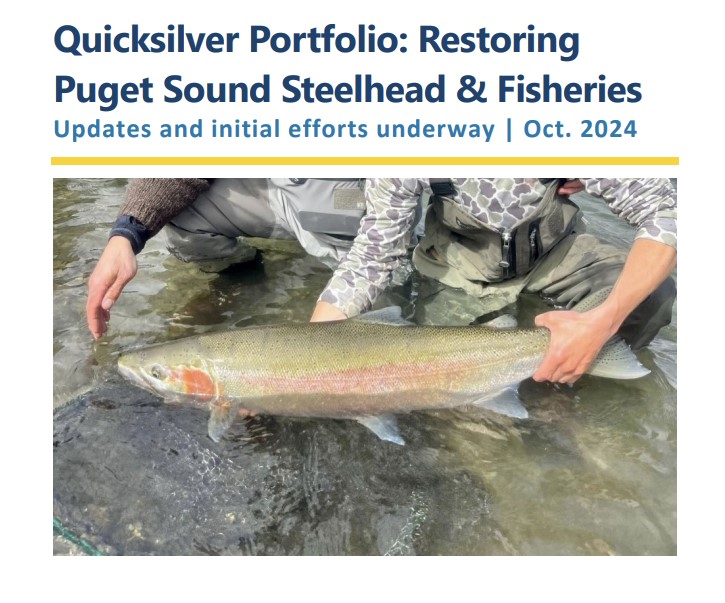
(For example, we’ve successfully advocated for renewed funding of the Quicksilver Portfolio funding in the 2021-2023, and 2024-2025 state budgets, for a total of $3.28M directly supporting Quicksilver and an additional $10.3M in freshwater monitoring in Puget Sound, which expanded support for additional projects within Quicksilver.)
While that status didn’t accurately represent the long-term needs of these important programs, this strategy worked fine until this year when the legislature put a restriction on new funding items to the budget crisis. Despite being funded previously, these items were technically considered “new” funding every two years and got cut as a result.
To WDFW’s credit, (before the budget crisis was known) they had proposed changing these classifications to ongoing funding status to better represent their actual role in the Department’s programming.
Two important policy wins
While the budget dominated the news, a pair of policy bills we worked hard to help pass were a bright spot this session.
Large Wood (Senate Bill 5157: Concerning the direct sale of valuable materials for habitat restoration projects)
Large woody debris plays a critical role in fish habitat. It creates scour pools, increases hydraulic complexity, and provides better gravel retention for spawning. Logjams provide cover and structure for juvenile and adult fish, offer protection from predators, and introduce key nutrients and organic matter, benefiting macroinvertebrates. Fallen trees attenuate stream power, which helps reduce erosion. Due to land use practices, logging and development, today far less large wood is naturally added to streams than it was historically. Replacing this lost material is a key aspect of many river restoration projects.
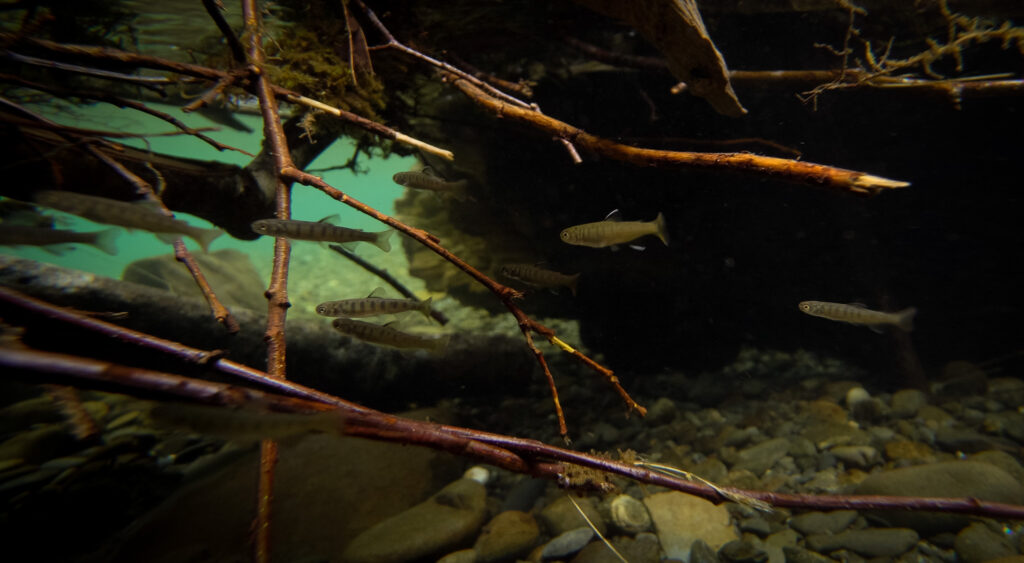
Image: Liam Gallagher
SB5157, sponsored by Senator Salomon, allows the Washington Department of Natural Resources (DNR) to work directly with fish recovery organizations to supply large wood for habitat restoration projects. Previously, DNR was unable to supply large wood valued above $25k without going through their timber auction processes, which often didn’t align with the requirement of habitat restoration grants. (For example, habitat projects prioritize trees with intact root wads to hold them in place during high flows.)
Thanks to our hard work, the leadership of Senators Salomon and Chapman, and partners like The Nature Conservancy and Puget Sound Partnership, this bill was signed into law by Governor Ferguson.
Enforcement (HB 1325: Expanding enforcement options for certain fish and wildlife violations)
Updating WDFW’s enforcement authority has been long overdue, and we worked with the Department this session to do just that. HB 1325, sponsored by Representative Goodman, reclassified several fish and wildlife violations and codified WDFW’s authority in a few new areas. Of these, the most important for fish was the reclassification of two types of destructive actions in streams, and establishing authority in state law for two violations related to guiding.
For some fisheries, WDFW requires guides to fill out a logbook with information about trips and catch numbers. While this was required, the compliance rate was only 46% to 55% of guided trips between 2020 and 2023, according to the Department’s records. Previously, WDFW did not have the authority to issue penalties for noncompliance. This corrects that disparity.
| Table 1. Logbook compliance, 2020-2023. | ||||
| Year | 2020 | 2021 | 2022 | 2023 |
| Unique guides reporting | 215 | 206 | 227 | 256 |
| Total licensed guides | 472 | 502 | 493 | 470 |
| Compliance rate | 46% | 41% | 46% | 55% |
Similarly, the Department did not have the authority to issue penalties to guides for violations committed by their clients. If clients are breaking rules, and the game warden believes the guide is intentionally letting it happen (or even encouraging it), the officer now has the discretion to also ticket the guide for the violation. This change is especially important in the case of repeat offenders who, until now, could avoid a ticket.
HB1325 was signed by the Governor on April 21. Special thanks to Captain Wickersham and the WDFW enforcement team for their excellent work advocating for these changes at the legislature.
Where do we go from here?
The Legislature provided over a billion dollars for both mandated fish passage work on State Highways and non-injunction habitat restoration work. To reduce the depth of necessary cuts, the Legislature passed new taxes estimated to generate around $4.3 billion in new revenue, these included a 38 percent increase in state fishing and hunting license fees, increases to Discover Pass fees, and a return of the Columbia River Salmon and Steelhead endorsement fee.
While we were happy to see the large wood and improved enforcement policies get signed by the Governor, we are concerned about the programs cut from the State’s budget. These items represent programs we believe are critical for Washington’s fish recovery and fishing opportunities, and we will continue to advocate on their behalf.
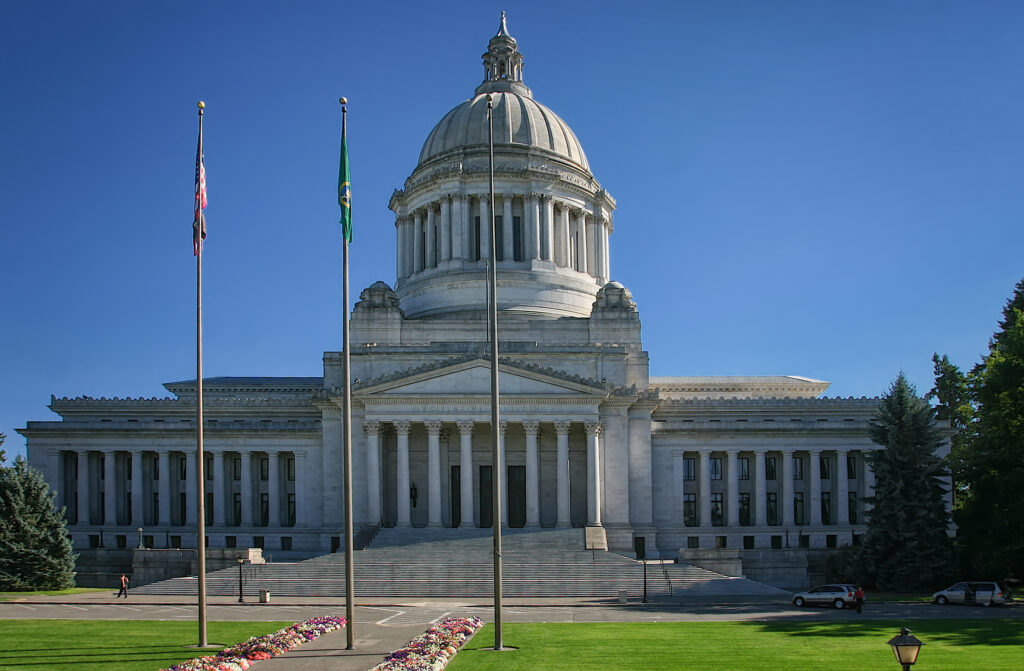
While their immediate future is frustrating, there is still hope for these budget items whenever the State’s budget situation improves, priorities shift, or new sources of funding are found. That could be as soon as the 2026 supplemental budget or perhaps in the 2027-28 biannual budget.
Regardless, stay tuned because we will need your help to educate decision makers and fight for these critical programs to regain funding as soon as possible.


